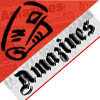|
Speak the same language as your pool contractor to make your renovation go smoothly! As summer comes to an end in Texas, as well as other southern states, it may be time to consider updating your pool/spa or taking care of some of those lingering issues which may have prevented total enjoyment of your backyard this year. While renovations can be done any time of the year, between late September and the end of April, when the pool is not being used, is the best time to undertake this project. Whether you were involved in the initial construction of your pool, or if you purchased a home with your first pool, being able to converse with and understand your pool contractor will make this type of project go more smoothly. First, let’s discuss how a pool is built! Specifically, we will in-ground gunite pools. Beginning with excavation, the process proceeds thru forming and setting rebar (steel rods) into the shape of the pool, ending with the placing of plumbing. It’s now time for gunite, which is used to construct the majority of pools in Texas. Created by the process of pumping dry concrete mix with compressed air through a hose to a nozzle where water is introduced. After gunite is complete, coping, tile, and the interior surface are installed. Now, let’s look at the various components of a pool. Interior Surface The interior surface of the pool is the finished product you touch and see. The most popular interior surfaces are plaster or various exposed aggregate finishes. Tile, fiberglass and paint surfaces are seen less and are not detailed in this article. Plaster is normally mixed onsite on a plaster truck. This specially outfitted truck has a mixer where ingredients are placed, once combined, the mixture is dumped into a hopper with a pump connected. From the hopper, the plaster is pumped through a hose with a nozzle on the pool end where air is introduced. Primarily, there are three types of “plaster”: Marcite plaster or simply plaster, which, in modern history, is the original interior finish of pools. The least expensive of the finishes, plaster is a mixture of cement, water, and crushed marble or simply marble sand. The typical life of plaster is 5 to 10 years. Plaster is negatively affected by chemical imbalances, shortening its life. Quartz plaster is a mixture of cement, water, quartz sand, and usually a proprietary mixture of polymers from the manufacturer. In most cases, colored quartz are added during the mixing process to add a little color. Dyes can also be added to produce a variety of surface colors, affecting the water color. The typical life of a quartz finish is 7-15 years. As with plaster, quartz finishes are also negatively affected by chemical imbalances. Pebble surfaces are a mixture of cement, water, aggregate (pebbles), as well as proprietary polymer mixtures. With several pebble sizes, enormous range of pebble colors, and various dyes, the number of finish combinations are many. The typical life of a pebble finish is 15 - 20+ years. Due to the surface being primarily pebble, with little exposed cementious material, pebble finishes are less affected by chemical imbalances. Coping Typically the 9-12” on top of the pool wall. Coping can be concrete, stone, or brick. Coping is separated from the deck by an expansion joint or mastic. Not all pools have coping, some are constructed with a cantilever deck that extends from the edge of the pool as one piece with the deck. Waterline Tile All interior finishes all designed to be wet 100% of the time. Therefore, waterline tile is an important component of a pool, allowing the water level to fluctuate with evaporation. The top 6” of the pool wall under the coping is the normal location of the waterline tile. The 6” can be achieved with one row of 6” tile, two rows of 3” tile, three rows of 2” tile, six rows of 1” tile, or a mosaic of sizes which equal 6”. Porcelain and glass are the most frequently used material. Raised Bond Beam or Raised Wall The bond beam is the top 12” of the pool wall. There is lots of steel in this part of the pool which adds to the structural strength of the swimming pool. If the pool wall is extended above ground, it is considered a raised bond beam or simply a raised wall. Raised walls can be covered with stone or tile. Negative edge/Infinity Edge/Vanishing Edge Pool These terms are used interchangeably and while there are many opinions about the differences, the main point is these pools have an area where water flows over the wall of the pool. It could be one section of the wall on one side where it appears as though the water continues or disappears into a larger body of water or into the sky, all the way up to water flowing over the entire perimeter of the pool creating more of a reflecting pool. These pools require either a catch basin or a gutter system to collect the water and additional equipment to pump the water back to the pool to maintain the water level. Tanning Ledge/Baja Shelf/Sun Shelf Providing a shallow area for kids to play and adults to hang out are popular additions to pools. Add bubblers and or umbrella sleeves to have the option to sunbath or just relax in the water. Water Features Waterfalls come in many shapes and sizes. Water, Fire, and Fire & Water Pots provide beautiful visual and auditory effects to the pool. Sheer Descents & Scuppers come in many styles and can provide a free flowing stream of falling water. Deck Jets/Laminer Jets and bubblers provide vertical flow of water adding a playful feature to any pool. Rainfall/Rain Sheer replicate the soothing sound of rain and as with all water features can assist with cooling the water. Hines Pool and Spa in Austin-TX-stands out from the competition with the promise of complete satisfaction to all of our customers. We offer cleaning, repairing, renovating and maintaining pools and spas in Central Texas so you can get the most out of your pool or spa. Visit our site at www.hinespool.com or call us at 512-873-8565 to schedule an initial consultation.
Related Articles -
Pool products, local pool products, pool chemicals, pool pumps, Austin, Texas Hines Pool and Spa, Pool cleaning, Leak detection, Repairs and Renovatio,
| 


















